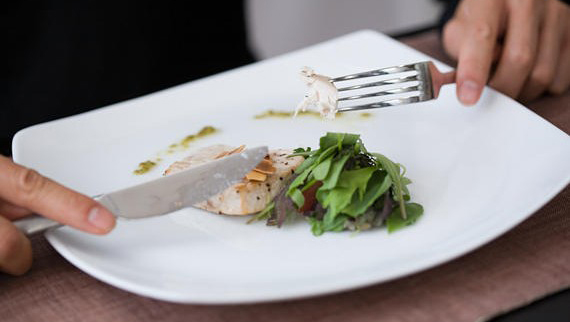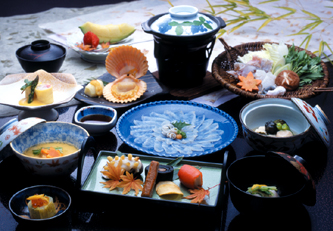Hi! It’s Patrick from Smith’s School of English in Koenji. I consider Japanese food to be one of the healthiest in the world. However, there are two things one needs to know about Japanese cuisine: 1. Not all Japanese food is healthy, and 2. It’s in fact hard to eat healthy in Japan if you’re counting calories.
Food for thought: The average serving of tempura is anywhere from 200-700 calories; katsudon (fried pork cutlet on rice) is about 900 calories for a small portion, while ramen ranges anywhere from 500-800 calories depending on the soup base and size. Sushi, perhaps the healthiest sounding of all, averages out to be 75 calories per piece. So, basically, if I go out and enjoy a meal, I’ll end up taking in way more calories than I should.
So how do Japanese people eat all this and still look and seem so healthy? In talking with several people, some of whom are experts, to enjoy Japanese food and stay healthy at the same time, here are five simple tips to follow.

1. Eating Hara-Hachibu – I grew up hearing “Finish all your food, think of all the starving children in the world.” In other words, full or not, eat everything that’s on your plate. There is a saying in Japan, eat hara hachibun-me, that is, eat until you’re 80 percent full. Following this principle will definitely help you not feel guilty of wasting food or having to unbutton your jeans at the dinner table.
2. Avoid ready-made food – OK, it’s nearly 9 p.m., you’re headed back home from work and cooking is the last thing on your agenda. So you stop by your local Japanese supermarket and thank God for the tons of ready-made meals, often heavily discounted at that time of the night. Hold it! Stop right there! These foods, like it or not, are the equivalent of fast food, and you know how unhealthy fast food can be. Instead, think about preparing the ingredients for your dinner before leaving home in the morning, and the actual cooking time will take no more than 10 to 15 minutes.
3. Watch out for Carbs, Salt and Sugar – The three things you’ll find plenty of in Japanese food are carbohydrates, sodium and sugar. While necessary for a healthy diet, moderation is key. Rice, noodles and bread are pretty much carbohydrate foods, and if every one of your meal consists of one of these, you should try to cut down on it. Regardless of whether you can see it or not, almost all Japanese meals include soy sauce (loaded with sodium). Sugar is perhaps the most deceptive of the lot. When I watch Japanese home cooking shows, I notice that sugar is infused in almost all the dishes from sauces and stews to curries. It’s used to balance out the flavors. Remember, everything in moderation.
4. Fad foods – Like everywhere else in the world, people in Japan go through fad food diets too. Don’t get sucked in to dieting only on bananas, black garlic, natto, umeboshi (pickled plum), yoghurt, tofu, green tea and a host of other fad diets that have all come and gone. Just remember, no specialists will ever advise you to eat only a single food item, no matter how healthy it is. Tofu and green tea are often touted as being “Japan’s miracle foods” overseas, but they’re actually standard parts of their traditional diet here. Yes, the miracle fad foods are healthy, but always keep in mind that too much of a good thing can be a bad thing.

5. Variety – One of the things I truly enjoy in Japan is a traditional Japanese meal at an onsen (hot spring) or ryokan (traditional Japanese-style inns). The meal is served with several small dishes filled with various foods from both the land and the sea. A traditional Japanese meal follows the ichijyu sansai principle (one soup with three vegetable dishes plus rice and fish) to assure a good balance. These small portions may feature well over 15 different foods per day or even per meal, and include numerous legumes, seafood, and vegetables, with little rice, noodles or meat involved. I’m told that all the vitamins and minerals the body needs can easily be found in these meals. I believe that the key to eating healthy in Japan is to strive to include several different products in small portions in your meals.
Leave a Reply